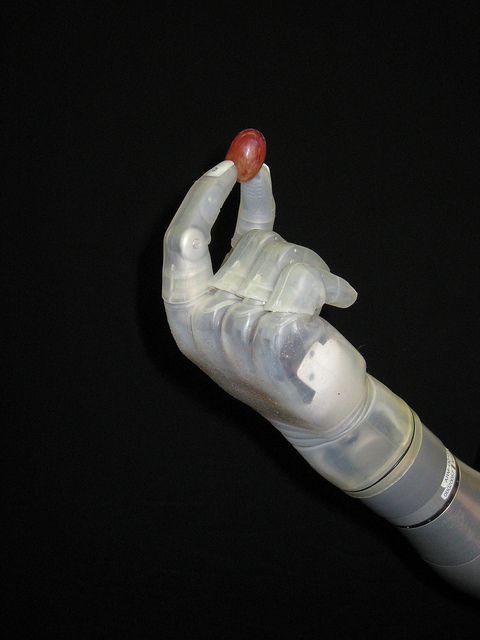Science Gives Paralyzed Man a Robotic Arm That Can Feel
I thought we were supposed to help the robots feel?

A 28-year-old man has been given a prosthetic arm he can actually feel. It seems that the robots have already learned to feel and are passing that skill—the one we thought they’d come to us for help with—back on to humans. Quick! Start trying to think of other reasons humans are useful, everyone!
The unnamed—to protect his privacy—paraplegic man was given his new prosthetic in a clinical trial by DARPA as part of the military research organization’s efforts to repair wounded soldiers. Prosthetics controlled by thoughts are already a reality (and amazing), but it’s difficult for those who use them to work them properly without feedback like we get from our own limbs.
A spinal cord injury had left the patient paralyzed for over a decade, but now he can manipulate objects and feel what he’s touching through electrodes placed in his brain that are wired to the new prosthetic arm. He’s even able to distinguish touch between the individual fingers and could tell when the researchers cheated by touching two at once: “He responded in jest asking whether somebody was trying to play a trick on him. That is when we knew that the feelings he was perceiving through the robotic hand were near-natural.”
DARPA program manager Justin Sanchez also said,
We’ve completed the circuit. Prosthetic limbs that can be controlled by thoughts are showing great promise, but without feedback from signals traveling back to the brain it can be difficult to achieve the level of control needed to perform precise movements. By wiring a sense of touch from a mechanical hand directly into the brain, this work shows the potential for seamless bio-technological restoration of near-natural function.
(via Gizmodo)
—Please make note of The Mary Sue’s general comment policy.—
Do you follow The Mary Sue on Twitter, Facebook, Tumblr, Pinterest, & Google +?
Have a tip we should know? tips@themarysue.com